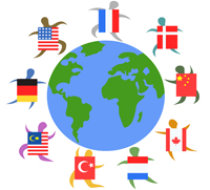Cognitive and affective processes in decision making
On November 25 Rima-Maria Rahal (PhD, research fellow, Tilburg University, The Netherlands) took part in the "Culture matters" research seminar with the report "Cognitive and affective processes in decision making".
It is not easy to predict which choices people will make in many social, moral, economic and even legal contexts. Less straightforward, even, is the investigation of how decision makers come to make their choices. Unobtrusive tools are needed to study the cognitive and affective processes underlying decision behavior and show examples of the exploration of such work using eye-tracking and thermal imaging in different domains. Using eye-tracking to investigate cognitive processes in intergroup dilemmas, it was studied decision makers’ struggles to decide between their acting according to their personal preferences for cooperating with others, and following the group norm to favor the in-group. Although in-group favoritism appeared to be pervasive in choices, only a minority of participants visually attended to group membership information and therefore drove this effect. In moral dilemmas, it was studied decision makers’ choice processes while they deliberated whether to maximizing welfare or adhere to overarching moral rules such as the prohibition to harm others, finding eye-tracking evidence that contradicts the current dual process approach to understanding moral decisions. In judicial dilemmas, it was studied via eye-tracking how decision makers balanced the benefits and costs of damages judgments to perpetrators, victims and society as a whole. Further, there was evidence from thermal imaging research used to study affective processes in judgments of veracity.

